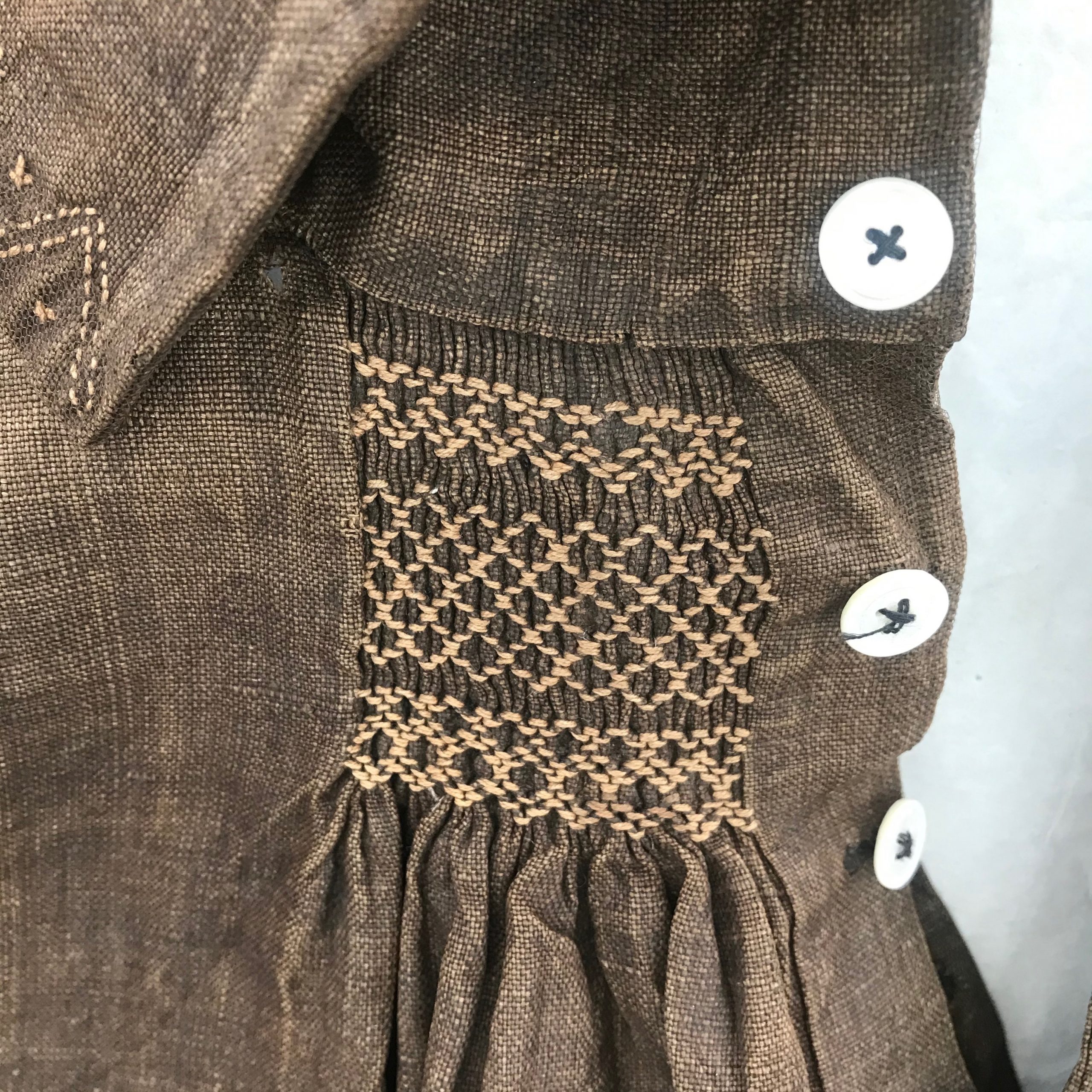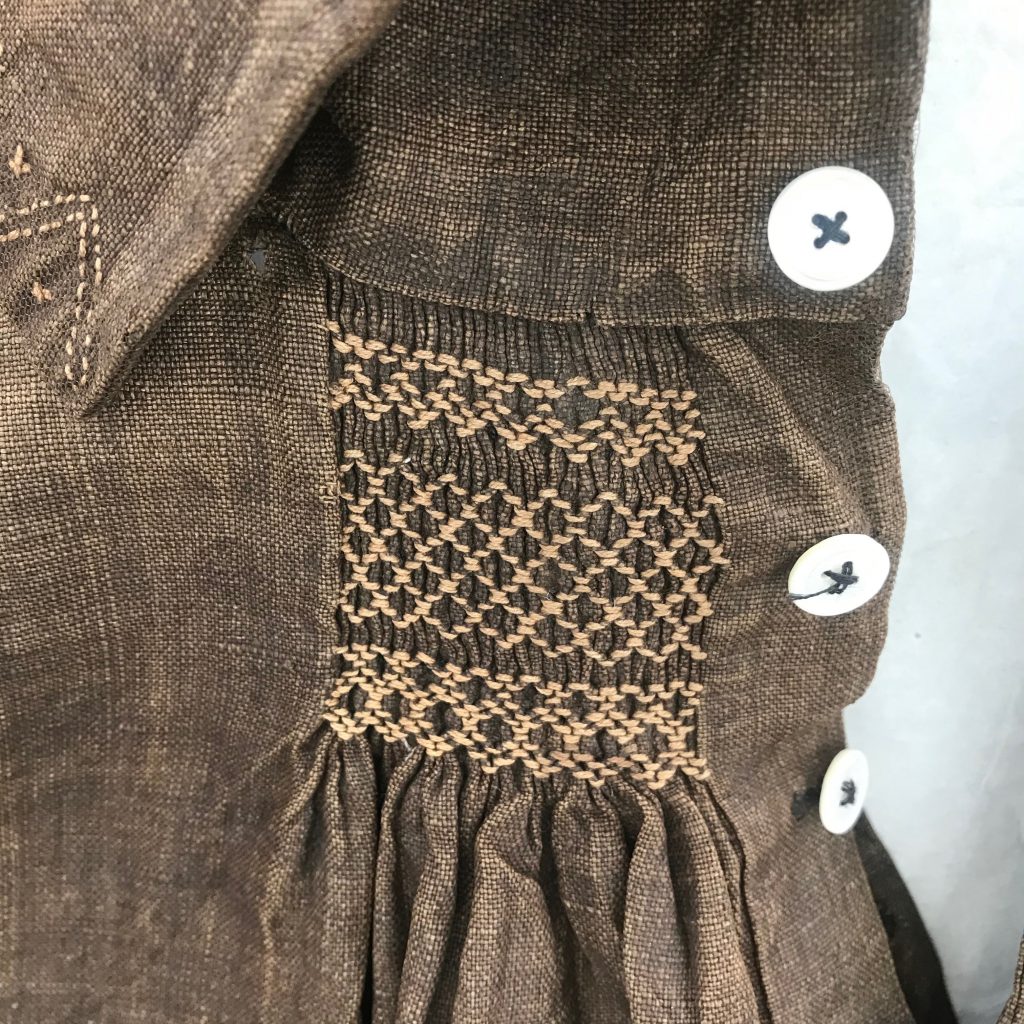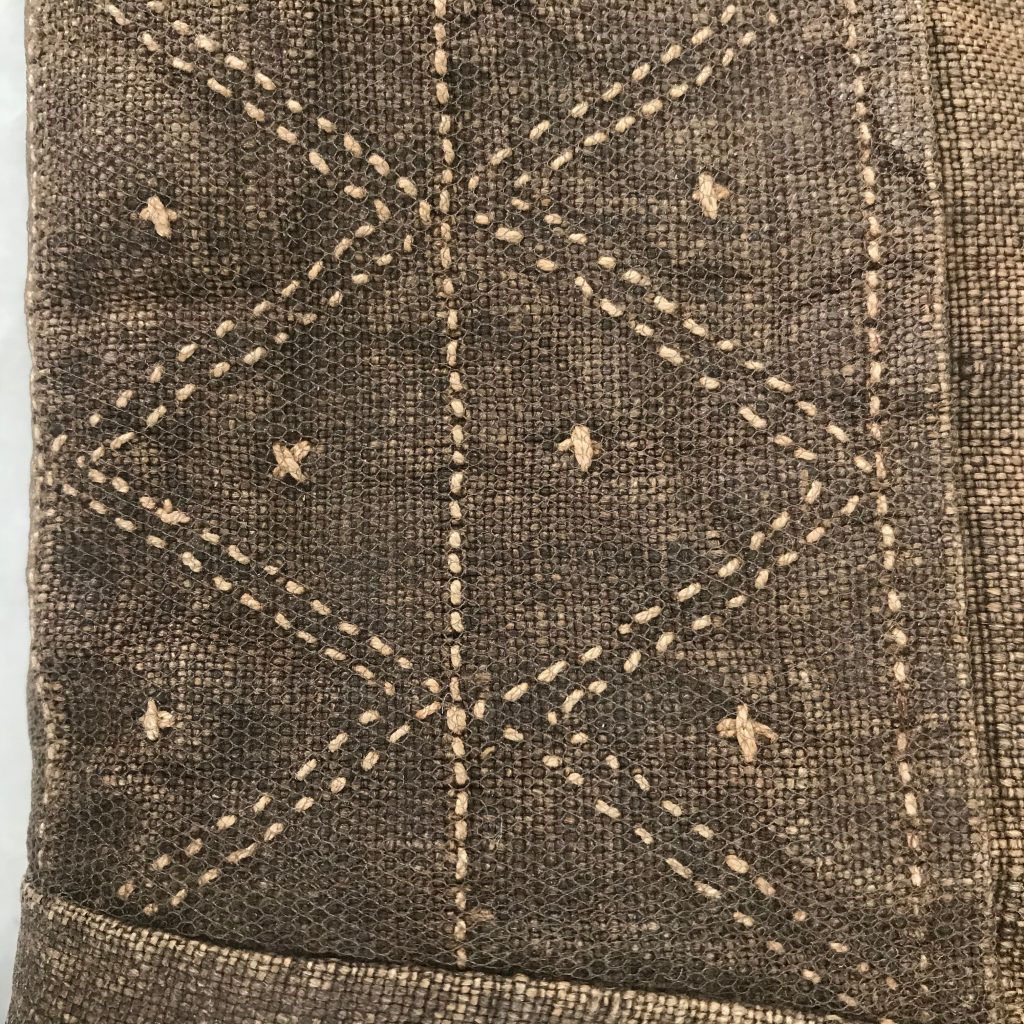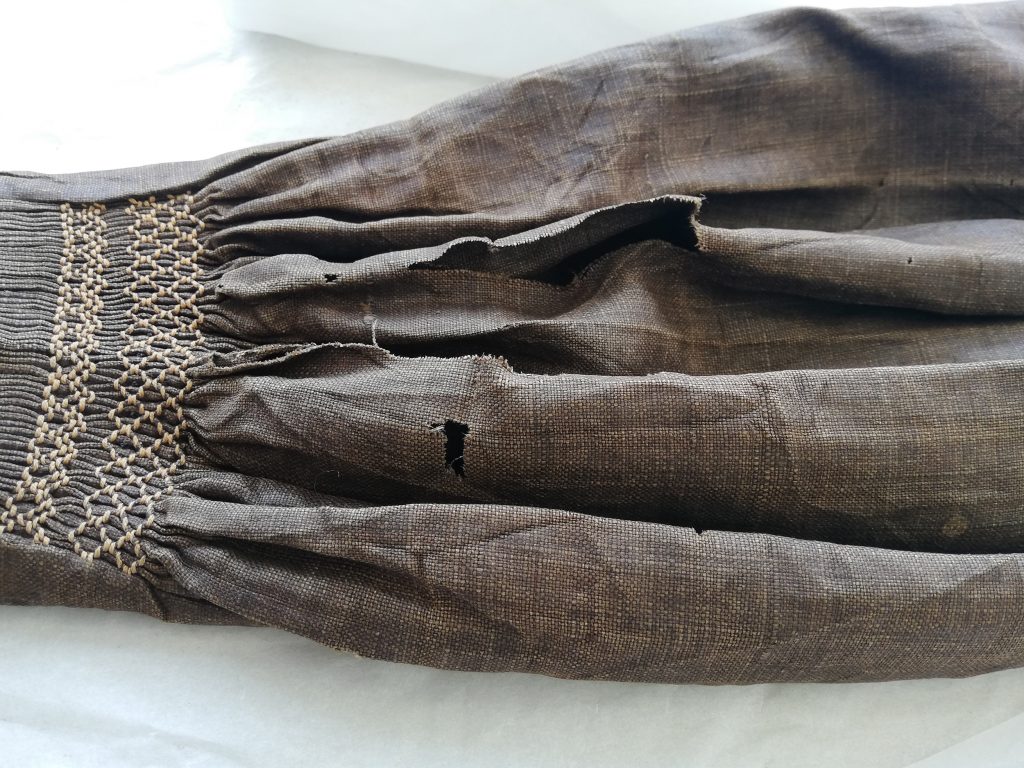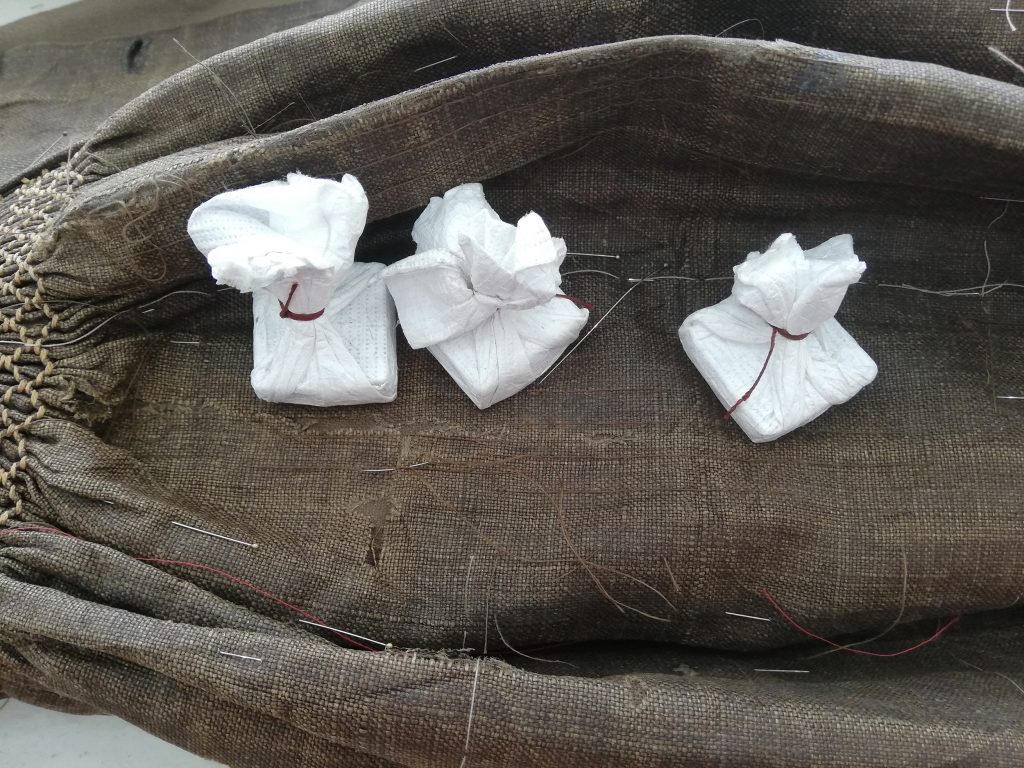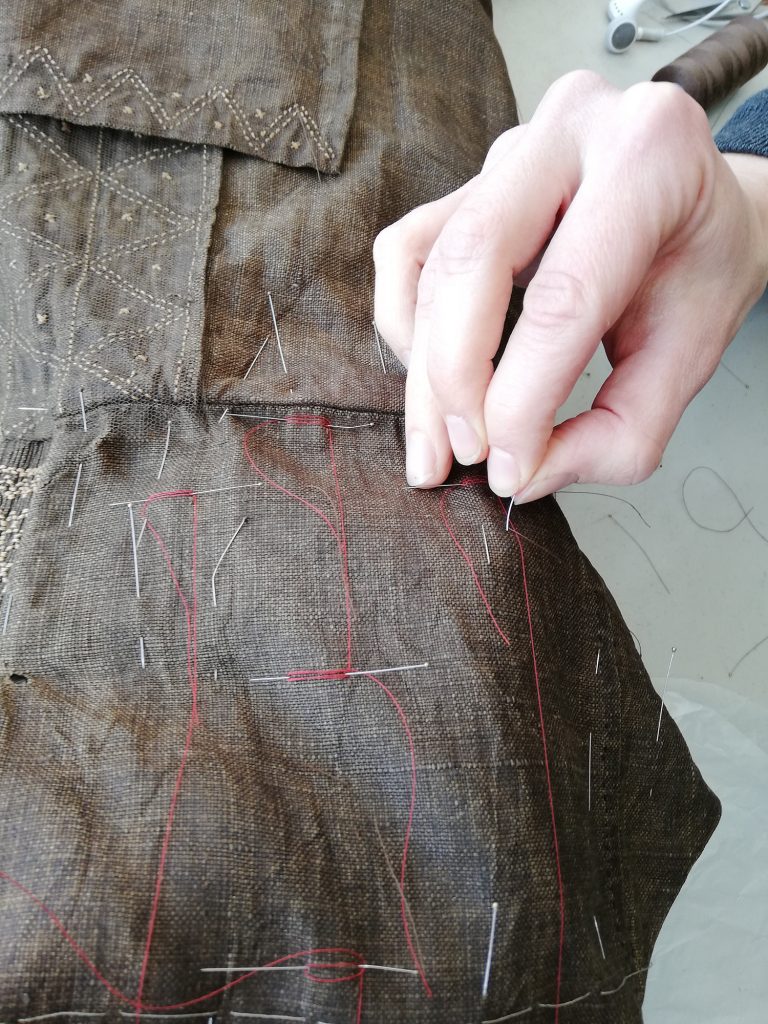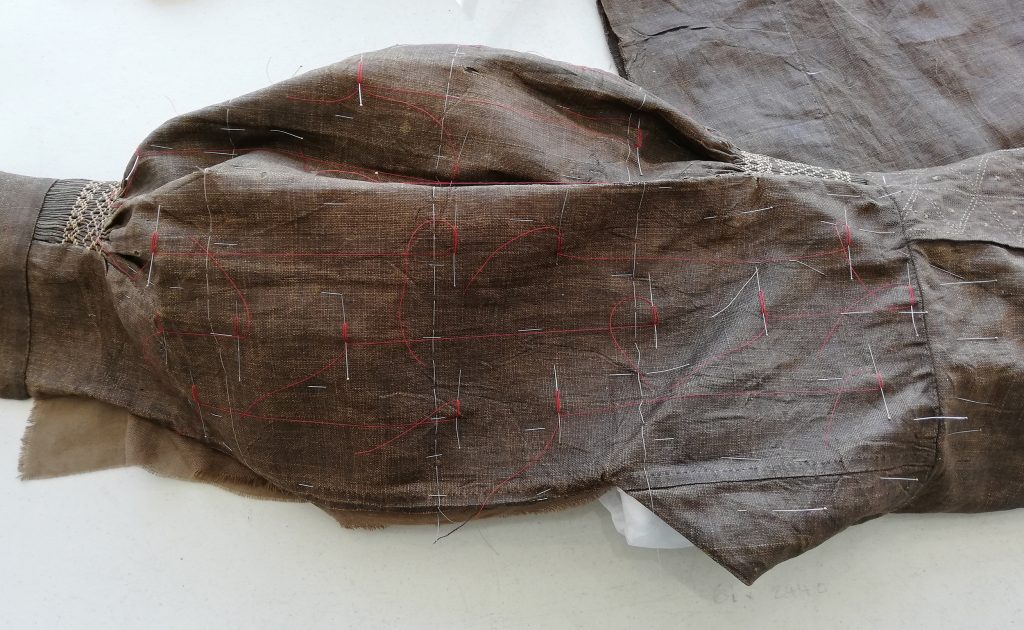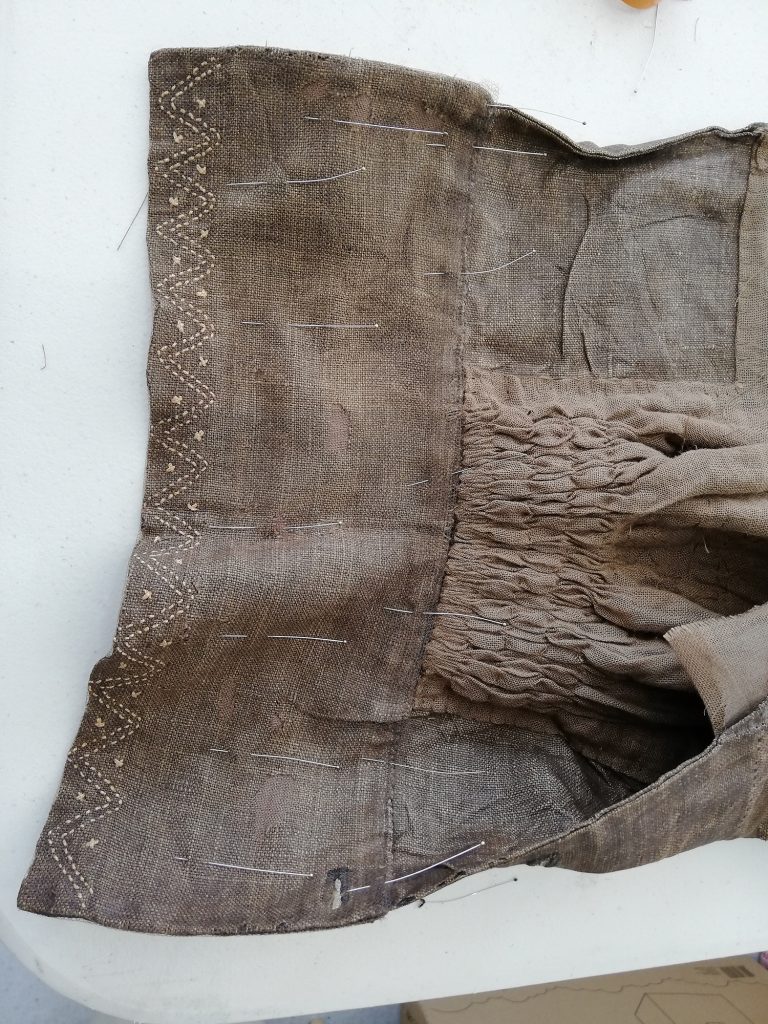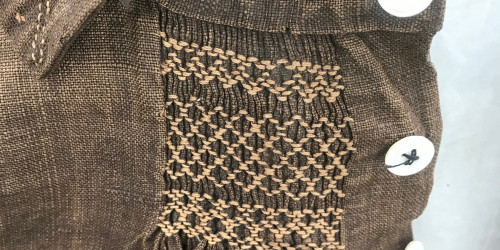
A late 19th Century English Sussex waterproofed smock in vulnerable condition from the collection of the Worthing Museum has recently been conserved partly as an ICON/HLF funded internship project started some years ago. Initial work was undertaken by Mira when an intern at the ZTC Studio but the more complex adhesive treatment required for the splitting, fragile sleeve was carried out later. One sleeve of the smock had been affected by prolonged exposure to light during long term display many years ago in the museum.
Smocks are rural working garments made of rectangular pieces of fabric and although the smocking is decorative it’s main function is to hold the excess fullness which provides freedom of movement. This smock is reversible meaning that both front and back are identical with buttoned up neck openings and double pockets in both side seams. The smocking gathering, the embroidery and all the seams are really beautifully stitched.
The oil based waterproof coating of the linen fabric makes the preservation of the smock challenging because as it ages and cross-links both the coating and the fibres have stiffened and now split easily if folded. The smaller splits and holes were supported onto light-weight, custom dyed linen fabric using laid couching stitching. The most damaged vulnerable areas including one side of the collar, the shoulder panels and one cuff were covered with custom-dyed fine nylon net to provide further protection.
The one very damaged sleeve required a more interventive treatment but it was too brittle to take stitching without an adhesive support being put in place first. The sleeve was given a full adhesive support from the wrist to the top of the seam running behind the smocking. After testing a range of adhesives, an 15% film Beva371® in Petroleum Spirit 100-120° on dyed silk crepeline was selected due to its strong bond combined with its lightness and pliability. It was important not to make the sleeve look too stiff and different from the other sleeve still in relatively good condition. The good working properties of Beva371® such as the tackiness of the film and the relatively low setting temperature were important characteristics due to the challenging construction of the sleeve with its fullness and then areas of tightness behind the smocking at the wrist and the shoulder.
The adhesive was cast on the dyed crepeline using a small roller and allowed to dry. It was then cut to shape and carefully heat-sealed to the reverse of the sleeve in small sections using a small, flat spatula iron. In the smocked areas the excess adhesive crepeline was pleated into small folds and secured in place behind, using stitching.
To provide further physical support and good visual infill in the areas of loss, a light weight custom dyed cotton fabric was prepared to precisely fit into the original construction of the sleeve. This involved gathering the shoulder and wrist areas to imitate the shape of the smocked sleeve. Several lines of gathering threads were hand stitched to create smooth result through the support cotton. Supplementary, staggered fixing lines and laid couching support stitching was carried out where necessary through all the layers to keep them in good contact and to stabilize the sleeve.
Very much part of the conservation treatment has been the provision of a slightly padded, fabric covered T-shaped storage mount on which to support the still fragile smock when stored. The mount has a slot for a pole to be inserted to help with handling and hanging for study and display. It is hoped that this will minimise handling and and prevent further folds and creases from developing – and this help this rare waterproofed smock to survive well beyond the 21st Century.
